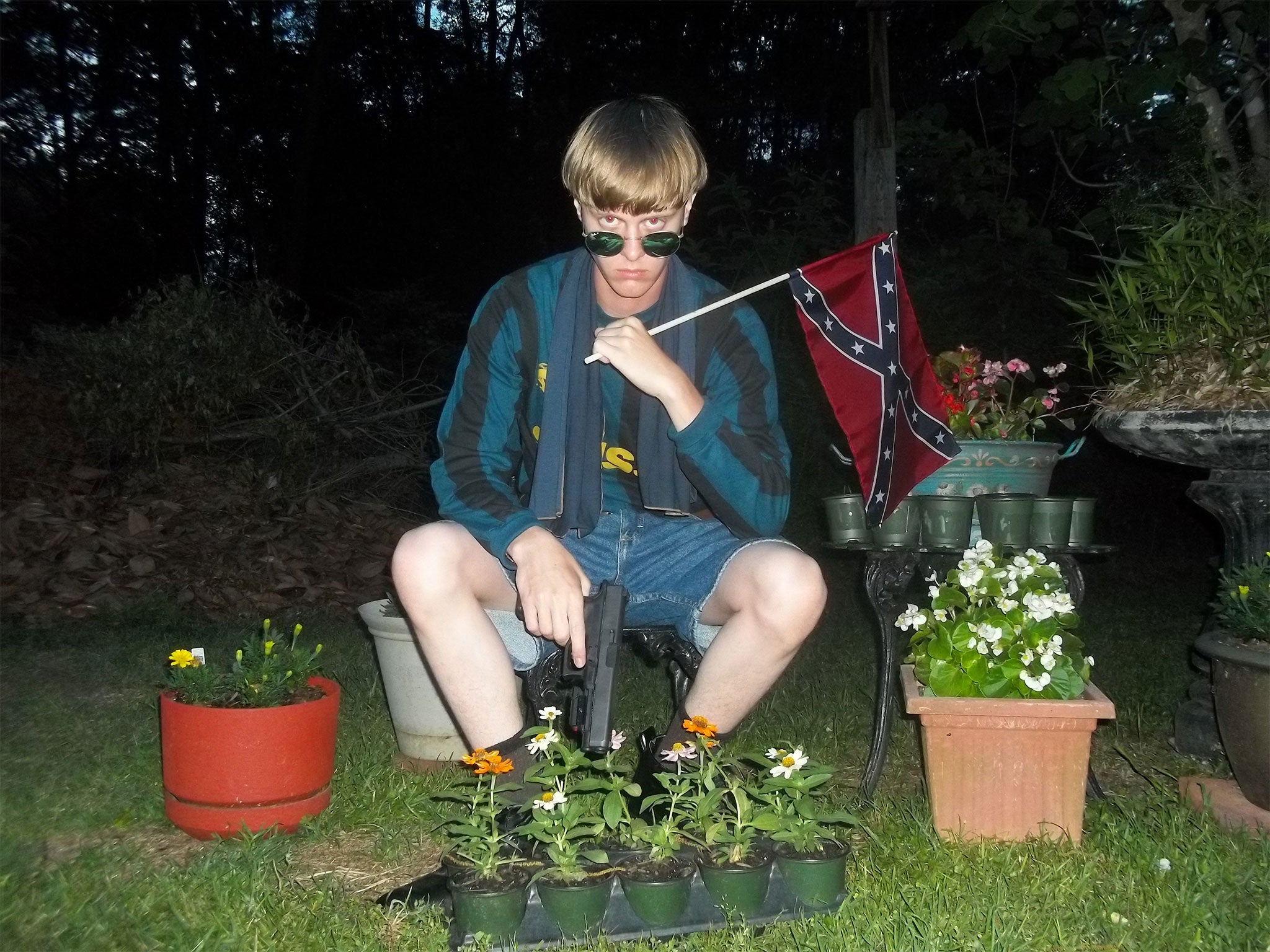Dylann Roof: The vile white supremacy that killed 9 black churchgoers
The 22-year-old hoped to start a race war with his vicious killing of nine black churchgoers

Dylann Roof, the self-identified and unrepentant white supremacist who killed nine black churchgoers in South Carolina, was sentenced to death by a federal jury.
Roof, 22, had been previously convicted of 33 counts for the attack on the historically black Emanuel African Methodist Episcopal Church in Charleston – 24 of which were classified as hate crimes. The mostly-white jury deliberated for three hours before handing the judge their unanimous verdict as Roof stood expressionless.
The 17 June 2015 killings sparked a national debate about the legacy of racism and white supremacy in the US, resulting in the removal of the Confederate flag from outside the South Carolina statehouse amid significant protests.
Groups of Ku Klux Klan members counter-protested in defence of the flag, a symbol of the pro-slavery Southern states that seceded from the Union in the 19th century prior to the Civil War.
And Roof drew from that racist history in his motivation for committing the terror attack at the historical church.
“I did what I thought would make the biggest wave,” the white supremacist wrote in a journal while he was held in custody, “and now the fate of our race is in the hands of my brothers who continue to live freely.”
Three days after the shooting took place, federal investigators uncovered a website with 60 images and a 2,000-word manifesto that delved deep into Roof’s troubling racist beliefs, outlining why he chose the Charleston church with the intent of inciting a race war.
“The event that truly awakened me was the Trayvon Martin case,” he wrote. “I kept hearing and seeing his name, and eventually I decided to look him up.”
Upon viewing the Wikipedia page, he concluded that shooter George Zimmerman was “in the right”.
“But more importantly this prompted me to type in the words 'black on White (sic) crime' into Google, and I have never been the same since that day,” he wrote. “The first website I came to was the Council of Conservative Citizens. There were pages upon pages of these brutal black on White murders. ... At this moment I realised that something was very wrong.”
The Council of Conservative Citizens is a hate group, according to the Anti-Defamation League, that publishes racist propaganda and misinformation. The ADL said the CofCC used “black-on-white crime” as a propaganda tool to mobilise white supremacists.
The ADL wrote:
On May 11, 2012, the white supremacist Council of Conservative Citizens (CofCC) posted an article on its Web site that claimed that a New Jersey newspaper had “censored” the race of the alleged assailants in what it called ‘savage mob attacks’ on five white concertgoers in New Jersey. The CofCC dismissed both the newspaper and police accounts portraying the incident as an ‘isolated event’. According to the CofCC, ‘almost as alarming as the epidemic violent crime being perpetrated against white people is the blatant media censorship and black-out of the racial element of the incidents.’
Roof’s manifesto continuously refers to black, Latino, and Jewish people in racist terms, and called his fellow white supremacists to action.
“I have no choice. I am not in the position to, alone, go into the ghetto and fight,” he wrote. I chose Charleston because it is the most historic city in my state, and at one time had the highest ratio of blacks to Whites (sic) in the country.”
He added: “We have no skinheads, no real KKK, no one doing anything but talking on the Internet. Well, someone has to have bravery to take it to the real world, and I guess that has to be me.”
During the trial, Roof’s attorney David Bruck argued that, while his client’s motivations were fuelled by racism and hatred, the Internet played a major role in his radical extremism.
“Every bit of motivation came from things he saw on the Internet. That’s it,” he told the court. “He is simply regurgitating – in whole paragraphs, slogans and facts – bits and pieces of facts that he downloaded from the Internet directly into his brain.”
In his closing statement to the jury, Roof, who represented himself during sentencing proceedings, maintained that he felt like he “had to do it”.
“In my confession to the FBI, I told them that I had to do it, and obviously that’s not really true. … I didn’t have to do anything,” he said. “But what I meant when I said that was, I felt like I had to do it, and I still do feel like I had to do it.”
Subscribe to Independent Premium to bookmark this article
Want to bookmark your favourite articles and stories to read or reference later? Start your Independent Premium subscription today.
